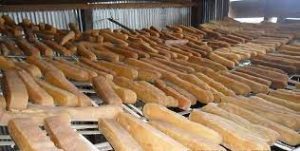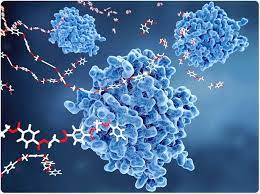Today’s Current Affairs: 7th Oct 2023 for UPSC IAS exams, State PSC exams, SSC CGL, State SSC, RRB, Railways, Banking Exam & IBPS, etc
Table of Contents
Chhatrapati Shivaji Maharaj’s Legendary Wagh Nakh:

Maharashtra’s Cultural Affairs Minister recently signed a memorandum of understanding (MoU) with the Victoria and Albert Museum in London to bring back Chhatrapati Shivaji Maharaj’s legendary wagh nakh (tiger claw) to the state.
- Chhatrapati Shivaji Maharaj was the founder of the Maratha Empire in western India.
- He was born on February 19, 1630,to Shahaji Bhosle and Jijabai in the fort of Shivneri, near the city of Junnar in the Pune district, Maharashtra.
- Shivaji carved out an enclave from the declining Adilshahi sultanate of Bijapur. It eventually became the genesis of the Maratha Empire.
- After establishing his rule, Shivaji implemented a competent and progressive administration with the help of a disciplined military and a well-established administrative set-up.
- He was known as the Father of the Indian Navy.
- Shivaji was the first to realise the importance of having a naval force, and therefore he strategically established a navy and forts at the coastline to defend the Konkan side of Maharashtra.
- He was called the ‘Mountain Rat’ and was widely known for his guerrilla warfare He was called so because of his awareness of geography of his land and guerrilla tactics like raiding, ambushing, and surprise attacks on his enemies.
- He was a secular ruler who was very accommodating of all religions. He had numerous Muslim soldiers in his army.
Burevestnik Missile:

President Vladimir V. Putin recently claimed that Russia had successfully tested the Burevestnik missile.
- The Burevestnik, whose name translates as “storm petrel”, is a ground-launched, low-flying cruise missile that is not only capable of carrying a nuclear warhead but is also nuclear-powered.
- The Burevestnik is one of six strategic weapons that the Russian President introduced in a 2018 speech.
- It is code-named ‘SSC-X-9 Skyfall’ by NATO.
- In theory, the nuclear energy could let it fly around the world several times before hitting its target.
- It is powered by a small nuclear reactor, which heats up air to propel the missile forward.
- Its nuclear propulsion gives the missile much longer range than traditional turbojet or turbofan engines that are limited by how much fuel they can carry.
- It has a range of up to 14,000 miles (22000 km).
Ichamati River : West Bengal

The Minister of State for Ports, Shipping and Waterways inaugurated the dredging work at National Waterways 44, Ichamati River in West Bengal .
- Ichamati River is actually a trans-boundary river that flows through India and Bangladesh.
- It acts as a boundary between the two nations.
- It is now in three parts
- The longer part flows from the Mathabhanga River, a distributary of the Padma, and after flowing for 208 km joins the Kalindi River near Hasnabad in North 24 Parganas and Debhata in Satkhira District.
- Ichhamati River and its tributaries form a large oxbow lake complexin North 24-Paraganas district near Bangaon.
Yak churpi : GI Tag

In a significant milestone for the northeastern state of Arunachal Pradesh, the unique and culturally significant yak milk product, ‘Yak Churpi,’ has been granted the coveted Geographical Indication (GI) tag.
- Yak churpi is a dairy product made from the milk of the indigenous Arunachali yak breed.
- It is reared by tribal yak pastoralists known as Brokpas who migrate along with their yaks to higher reaches (at an altitude of 10,000 ft and higher) during summers and descent to mid-altitude mountainous regions during winters.
- These remarkable yaks are primarily found in the West Kameng and Tawang districts of the state.
- Churpi is a naturally fermented dairy product and rich in protein content.
- It is an essential dietary staple for tribal communities inhabiting the cold and mountainous regions of Arunachal Pradesh.
- It is often used as a vegetable substitute and is also incorporated into vegetable and meat curries and is commonly consumed with rice.
- This GI tag is going to serve the cause of yak conservation and yak pastoralists’ socio-economic upliftment.
- Yaks are reared in high altitude areas in the Himalayan region but the Arunachali yaks are a unique breed in respect to their body shape, size, strain and weight.
- Arunachali yaks are also the only registered yak breed in India
BlueWalker 3 Satellite:

An international team of scientists have published a paper detailing the impact of the prototype BlueWalker 3 satellite on astronomy.
- BlueWalker 3 satellite is a prototype satellite, part of a satellite constellation planned by its owner AST SpaceMobile.
- It was one of the brightest objects in the night sky, outshining all the brightest stars.
- It was launched in September 2022.
- It is the largest-ever commercial communications array deployed in low-Earth orbit and is designed to communicate directly with cellular devices via 3GPP standard frequencies at 5G speeds.
- It uses wavelengths close to those that radio telescopes observe in, the satellite could also hamper radio astronomy.
Satellite constellation:
- It is a group of artificial satellites working together as a system.
- Unlike a single satellite, a constellation can provide permanent global or near-global coverage, such that at any time everywhere on Earth at least one satellite is visible.
Specs 2030 : WHO

74th World Health Assembly, 2021 has embarked on an initiative called “Specs 2030” to provide integrated and people-centered eye care.
- The World Health Organization (WHO) is set to launch the SPECS 2030. The initiative’s goal is to assist member states in addressing the unmet need for spectacles while ensuring the delivery of quality eye care.
- It envisions a world in which everyone who needs a refractive error intervention has access to quality, affordable and people-centred refractive error services.
- It has the mission to support Member States with the achievement of the 74th World Health Assembly endorsed 2030 target on effective refractive error coverage.
- The initiative calls for coordinated global action amongst all stakeholders across 5 strategic pillars, in line with the letters of SPECS, to address the key challenges to improving refractive error coverage.
NanoPtA : Nanozyme

Researchers at the Indian Institute of Science (IISc) have developed a novel enzyme mimic called NanoPtA, with significant potential applications in wastewater treatment and healthcare.
- In this study, the IISc team synthesized NanoPtA, a platinum-containing nanozyme that can be converted into a powder for industrial use.
- NanoPtA exhibits the ability to degrade toxic chemicals in industrial wastewater effectively when exposed to sunlight.
- When NanoPtA comes into contact with wastewater, it forms tape-like structures through non-covalent interactions between benzene rings and long alkyl chains in the molecules.
- These structures emit light, which enables them to oxidize pollutants in the presence of sunlight, reducing wastewater toxicity.
- The researchers found that NanoPtA could rapidly degrade common pollutants like phenols and dyes, even at low concentrations, within ten minutes under sunlight.
- Beyond wastewater treatment, scientists believe that NanoPtA has potential applications in healthcare.
- It could serve as a valuable diagnostic tool for neurological and neurodegenerative diseases, showcasing its versatility and significance in multiple fields.
Nanozymes:
- They are nanomaterials that possess enzyme-like properties. Unlike natural enzymes, which are typically proteins, nanozymes are typically made of inorganic materials such as nanoparticles.
- These nanostructures can catalyze chemical reactions in a manner similar to enzymes
Amphibian Crisis:

A global assessment conducted by conservationists reveals that Earth’s amphibian species are facing a critical threat of extinction.
- Of the 8,011 amphibian species assessed, 41% are now considered threatened with extinction due to various factors, including habitat destruction, disease, and climate change.
- This situation represents a worsening trend since the first assessment in 2004, which found 39% of amphibian species threatened.
- Amphibians are experiencing a more severe crisis compared to other vertebrate groups, with 27% of mammals, 21% of reptiles, and 13% of birds also facing extinction threats in separate assessments.
- Salamanders and newts are the most threatened amphibian order, with 60% of species facing extinction, followed by frogs and toads (39%) and caecilians (16%).
Sagar Parikrama Phase-IX:

The Indian government announced that the ninth phase of the ‘Sagar Parikrama’ programme will commence on October 7, 2023. ‘Sagar Parikrama’ is aimed at addressing the issues of fishermen and other stakeholders
- The ninth phase of the programme will cover coastal districts in Tamil Nadu and Puducherry.
- The covered areas include Pudukkottai, Thanjavur, Nagapattinam, Mayiladuthurai, Cuddalore, Viluppuram, Chengalpattu, Chennai, Karaikal, and Puducherry.
- The journey will begin in Thondi, Ramnad district of Tamil Nadu, and continue to Chennai, passing through various districts and Puducherry.
- The first eight phases of ‘Sagar Parikrama’ covered 4,115 km in eight coastal states and union territories, including Gujarat, Diu and Daman, Maharashtra, Goa, Karnataka, Kerala, Puducherry, and Andaman and Nicobar.
Second Ananda Coomaraswamy Memorial Lecture:

The Indira Gandhi National Centre for the Arts (IGNCA) organized the Second Ananda Coomaraswamy Memorial Lecture on October 6, 2023.
- The lecture was held to commemorate the 76th Death Anniversary of A.K. Coomaraswamy, a pioneering art historian of the 20th century.
- The topic of the lecture was “Towards Decolonizing Indian Art History via the Problem of Mimesis in the Citrasutra.”
- A.K. Coomaraswamy was a renowned art historian known for his intellectual eloquence and advocacy for the indigenous roots of Indian art.
- His work remains influential and inspiring across various fields of study.
- IGNCA acquired Coomaraswamy’s collection of books, art objects, paintings, photographs, and correspondences in 2008.
- The lecture aims to acknowledge A.K. Coomaraswamy’s significant contributions to the field of art and culture.
- It focuses on the theme of decolonizing Indian art history and revisiting the theory of performative mimesis (anukarana vada) in Indian aesthetics.
Mega Defence Event East Tech 2023:

The Eastern Command of the Indian Army is organizing a significant defence event, “East Tech 2023,” to showcase the latest defence technologies.
- “East Tech 2023” aims to identify cutting-edge technologies that can address operational challenges in the Eastern Sector and enhance self-reliance in defence technology.
- “East Tech 2023” Facilitate the Eastern Command in meeting operational challenges through indigenous technology.
- Promote “Atma Nirbhar Bharat” (self-reliant India) by engaging Indian manufacturers, including MSMEs, DRDO, DPSUs, R&D organizations, and academia.
- It Provide a platform for startups and defence industry players from Assam and other Northeastern states to showcase their innovations.
- It Create awareness of contemporary defence technologies and hardware solutions.
- It Strengthen the integration of North East defence manufacturers into supply chains.
- It will Focus on battlefield transparency, command and control architecture, communication systems, information dominance, electronic warfare, nano technology, artificial intelligence, unmanned warfare systems, mobility, CBRN defence, advanced weapon systems, survival systems, and non-lethal weapons.
Nobel Peace Prize 2023:

Narges Mohammadi for her fight against the oppression of women in Iran and her fight to promote human rights and freedom for all.
- The Norwegian Nobel Committee has decided to award the Nobel Peace Prize for 2023 to Narges Mohammadi for her fight against the oppression of women in Iran and her fight to promote human rights and freedom for all.
- Her brave struggle has come with tremendous personal costs.
- Altogether, the regime has arrested her 13 times, convicted her five times, and sentenced her to a total of 31 years in prison and 154 lashes.




